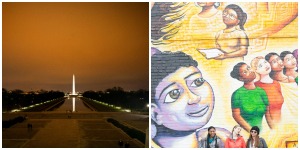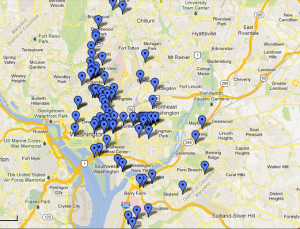By Lanie Rivera
Editor
If you’re planning to visit the Smithsonian art museums in D.C., you might want to make other arrangements — six of the galleries are closing their doors at random and without warning, according to an article on The Verge.
Sequestration budget cuts are forcing the Smithsonian to close the doors of the National Portrait Gallery, the American Art Museum, the Hirshhorn Museum and Sculpture Garden, the National Museum of African Art and the Freer and Sackler Galleries of Asian Art, six of the Smithsonian’s most prestigious galleries.
The details of the closings have not been disclosed, and the news came as a surprise to many because the Smithsonian vowed to keep its doors open despite the sequestration, according to CBS. Now, The Verge reported that the museums are supposed to cut off nearly 5 percent of its budget, approximately $42 million, in this year alone.
Employees and visitors alike are flustered that the closing schedule is not posted. Many contracted security guards from AlliedBarton (a private firm that details the staff at the Smithsonians) will be affected, but this statement from the company shows they neglect to release information about the employees’ future:
“AlliedBarton Security Services does not release information related to client contracts. We work in conjunction with our clients to meet their ongoing needs for security officer services.”
Not only will the security guards take a toll, but there will also be a freeze on new hires, a decrease of employee travel and postponed maintenance at major museums such as the National Air and Space Museum.
The Smithsonian Institution’s Secretary G. Wayne Clough testified before Congress last week to outline the effects of the sequestration:
“We have little budgetary flexibility remaining, and these required reductions will be felt by our visitors and those who are increasingly expecting services online.”
So why leave employees and visitors in the dark?
Linda St. Thomas, a spokesperson for the Smithsonian Institution, told The Verge that none of the officials even know when the exhibits will be closed:
“The reason we can’t post [closing information] online is because we don’t know … We won’t know enough time in advance to do a web post.”
Decisions will be made on a day-to-day basis by the Institution’s museum directors and heads of security.
Although these budget cuts are temporary, Smithsonian officials are not at ease. Both Clough and St. Thomas cautioned that the cuts could become permanent if they continue past 2014.
Clough didn’t expect the effects of the sequestration to even get this bad, according to the CBS article from February of this year. Clough told CBS he wanted to avoid layoffs and museum closings.
The effects of the sequestration could “translate into permanent staff reductions,” and museums will be “forced to postpone or cancel exhibitions,” Clough told The Verge.
Despite rumors of the Smithsonian Institutions charging admission, authorities made it clear that the museums will remain open to the public without a fee. The Verge reported:
The idea has been floated repeatedly by members of Congress and other parties throughout the Smithsonian’s 167-year history, but each time, the Smithsonian’s Board of Regents — the governing board of the institution — has summarily rejected it.
[WC: 540]









